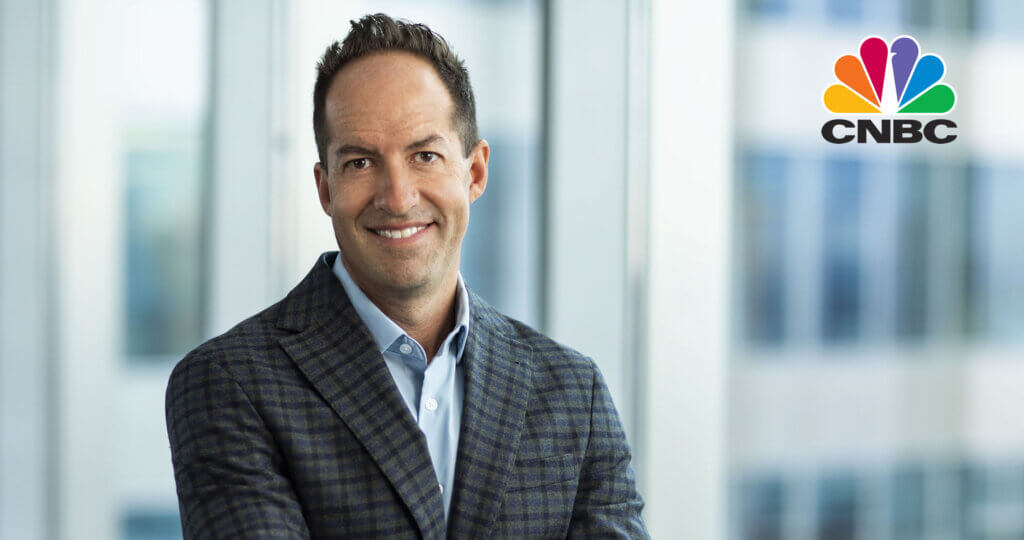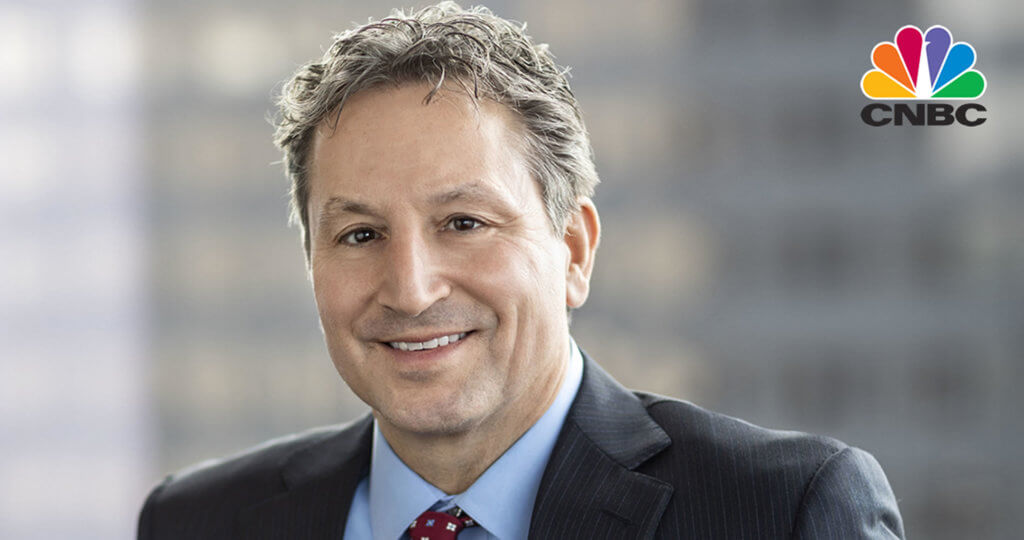Oakmark Global Fund - Investor Class
Average Annual Total Returns 03/31/14
Since Inception 08/04/99 11.73%
10-year 9.22%
5-year 22.18%
1-year 25.78%
3-month 1.69%
Gross Expense Ratio as of 09/30/13 was 1.13%
Past performance is no guarantee of future results. The performance data quoted represents past performance. Current performance may be lower or higher than the performance data quoted. The investment return and principal value vary so that an investor’s shares when redeemed may be worth more or less than the original cost. To obtain the most recent month-end performance data, view it here.
Quarter Review
The Financial Times service Ignites recently surveyed professional investors regarding the importance of macro forecasting to their investment process. “Macro is very important” proved to be the dominant answer. For these macro thinkers, the recent quarter may have been unusually challenging. If a macro investor had known that the quarter would include the Crimea annexation and the West’s response, turmoil in important emerging markets (e.g., Thailand, Turkey, South Africa, Egypt and Venezuela), continuation of the tragic civil war in Syria and tepid economic growth in developed economies, we suspect that this investor would have forecasted significant market declines, particularly given 2013’s strong market performance. As it happened, however, global stock prices experienced short bouts of volatility, but the quarter ended with modest gains.
During the most recent quarter the Oakmark Global Fund, which is not managed by macro investors, gained 2%. The MSCI World Index’s return approached 1%, while the Lipper Global Fund Index returned 2% during the same time period. For the first six months of the Fund’s fiscal year, the returns are 8% for the Fund, 9% for the MSCI World Index and 9% for the Lipper Global Fund Index. Since inception in 1999, the Fund has achieved a compound annual rate of return of 12%, which compares to 4% for the MSCI World Index and 5% for the Lipper Global Fund Index.
The countries that contributed most to the Fund’s return this quarter were Switzerland, the U.S. and Germany. The countries that detracted most from the Fund’s return were Japan, the U.K. and France. The five largest contributors to the Fund’s return in the quarter were Incitec Pivot (Australia), Oracle (U.S.), Rheinmetall (Germany), Union Pacific (U.S.) and TE Connectivity (Switzerland). The Fund holdings that detracted most were General Motors (U.S.), MasterCard (U.S.), Julius Baer Group (Switzerland), Daiwa Securities Group (Japan) and FedEx (U.S.).
For the fiscal six months, the U.S., Germany and Switzerland contributed the most to investment return, while Japan was the only detractor. Oracle (U.S.), Bank of America (U.S.), Daimler (Germany), Union Pacific (U.S.) and FedEx (U.S.) contributed most to fiscal six-month return, while CNH Industrial (Netherlands), Toyota Motor (Japan), Julius Baer Group (Switzerland), Hirose Electric (Japan) and Itron (U.S.) detracted most.
Portfolio Activity
Investors will recall that U.S. markets performed particularly well in 2013, as did the Global Fund’s holdings. Given our value investing philosophy, it should come as no surprise that we reduced the weight of U.S. holdings in the portfolio during the previous quarter. However, we did this without eliminating any holdings. As individual issues approach their sell targets, our practice is to reduce their portfolio weight in favor of those opportunities that we find more compelling. Remember that the Fund’s guidelines are broad: the U.S. (or international) weight can range between 25% and 75% of the portfolio. Therefore, we have considerable flexibility to invest wherever we believe we are finding the best values. Also, your managers’ economic interests are aligned with Fund shareholders because we have substantial personal investments in the Global Fund.
Relative to the MSCI World Index, this reduction in the Fund’s U.S. weight increased its relative dispersion. The Fund is also underweight the MSCI in the U.K. and France, and it has no exposure to several other countries with index representation (e.g., Canada). Switzerland continues to be the largest overweight versus the index by a substantial margin. Larger Swiss companies typically generate the majority of their revenues outside of their relatively small home country. For several years the Swiss franc has been very strong, and this has reduced the apparent value of foreign-sourced profits when translated back to francs. We believe that this has helped to create the opportunity to purchase shares of well-managed Swiss-domiciled companies at attractive prices.
We initiated two new positions during the quarter, Citigroup (U.S.) and Samsung (Korea), which increased the number of Fund holdings to 43. The Fund went more than eight years without owning shares of a U.S. banking institution until the purchase of Bank of America last fall. We have found that in the aftermath of the 2008 financial crisis the Federal Reserve created an environment in which the financial industry could rebuild its capital position so that it now offers attractive risk-adjusted investing opportunities. Aside from an attractive valuation, our thesis for investing in Citigroup rests on the company’s franchise, management and capital position. With its ability to bank and process payments across more countries than its competitors, Citi’s global consumer banking franchise is second to none. Furthermore, in times of economic or political stress in emerging markets, Citigroup is seen as a relatively safe haven locally. In 2013 Michael Corbat became the new CEO of Citigroup, and we find him rational, realistic and respected within the organization. We calculate that Citi has meaningful excess capital, which – combined with its significant deferred tax assets – should give management various options to increase shareholder value. Finally, we note that Citi also has a substantial private banking unit, much of which services the owners and managers of its corporate clients. Late in the quarter the Federal Reserve announced that Citi had failed its latest stress test because of process (rather than capital or liquidity) issues. The stock price dropped following this announcement, giving us the opportunity to build our position at a desirable price.
Samsung Electronics is a new addition for the quarter, but it is not a new name for long-term holders of the Fund. We last owned Samsung in mid-2007, but sold the position when the shock from the Lehman Brothers collapse gripped global markets, making other names more attractive. Incredibly, we are able to buy Samsung today at a larger discount to our estimate of intrinsic value than we did over five years ago, even though the stock has performed well since that time. We believe that this is due to faster than expected growth of sales and profits in the mobile phone business, along with the dramatic change in the competitive landscape of the memory business. The former has strengthened Samsung’s balance sheet, moving the company from a small net debt to a sizable net cash position. The latter means the normal profitability from the memory business should surpass what we’ve experienced in the past. Samsung is the market leader for DRAM chips, holding nearly 50% of the total market share in all DRAM chips and over 60% market share in higher quality DRAM chips, such as those used in mobile communication devices. Samsung also leads the market in NAND chip production, commanding approximately 40% share. We are well aware of the inherent difficulties of choosing a winner in the mobile handset business, so we incorporated a stress test into our analysis of Samsung that included a downside scenario. Given that Samsung performed solidly on those measures and that we are only paying 4x cashflow, 1x book value and 65% of sales, we believe that the risk/reward of owning Samsung is once again attractive.
Currency Hedges
Global currencies were relatively stable during the quarter, but we continue to believe some currencies are overvalued. As a result, we defensively hedged a portion of the Fund’s currency exposure. Approximately 28% of the Australian dollar and 37% of the Swiss franc were hedged at quarter-end.
Thank you for being our partners in the Oakmark Global Fund. Please feel free to contact us with your questions or comments.
As of 03/31/14, Incitec Pivot, Ltd. represented 2.8%, Oracle Corp. 5.3%, Rheinmetall AG 1.7%, Union Pacific Corp. 3.0%, TE Connectivity, Ltd. 3.6%, General Motors Co. 3.4%, MasterCard, Inc. Class A 3.3%, Julius Baer Group, Ltd. 3.7%, Daiwa Securities Group, Inc. 2.3%, FedEx Corp. 2.9%, Bank of America Corp. 3.0%, Daimler AG 2.6%, CNH Industrial N.V. 3.6%, Toyota Motor Corp. 2.8%, Hirose Electric 1.4%, Itron, Inc. 0.8%, Citigroup, Inc. 2.0%, and Samsung Electronics Co., Ltd. 2.4% of the Oakmark Global Fund’s total net assets. Portfolio holdings are subject to change without notice and are not intended as recommendations of individual stocks.
Click here to access the full list of holdings for The Oakmark Global Fund as of the most recent quarter-end.
The MSCI World Index (Net) is a free float-adjusted market capitalization weighted index that is designed to measure the global equity market performance of developed markets. This benchmark calculates reinvested dividends net of withholding taxes using Luxembourg tax rates. This index is unmanaged and investors cannot invest directly in this index.
The Lipper Global Funds Index measures the performance of the 30 largest mutual funds that invest in securities throughout the world. This index is unmanaged and investors cannot invest directly in this index.
The Fund’s portfolio tends to be invested in a relatively small number of stocks. As a result, the appreciation or depreciation of any one security held by the Fund will have a greater impact on the Fund’s net asset value than it would if the Fund invested in a larger number of securities. Although that strategy has the potential to generate attractive returns over time, it also increases the Fund’s volatility.
Investing in foreign securities presents risks that in some ways may be greater than in U.S. investments. Those risks include: currency fluctuation; different regulation, accounting standards, trading practices and levels of available information; generally higher transaction costs; and political risks.
The percentages of hedge exposure for each foreign currency are calculated by dividing the market value of all same-currency forward contracts by the market value of the underlying equity exposure to that currency.
The discussion of the Fund’s investments and investment strategy (including current investment themes, the portfolio managers’ research and investment process, and portfolio characteristics) represents the Fund’s investments and the views of the portfolio managers and Harris Associates L.P., the Fund’s investment adviser, at the time of this letter, and are subject to change without notice.






